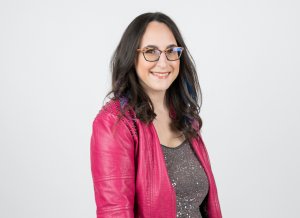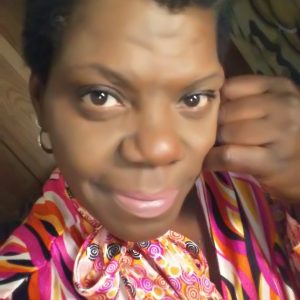Q&A with Andrew Housser, Co-CEO of Freedom Financial Network
Andrew Housser is the co-founder of Freedom Financial Network, which provides comprehensive financial services to consumers through its subsidiaries Freedom Debt Relief, FreedomPlus, and Bills.com. Andrew has extensive experience in the financial services industry, having done private equity investing with Littlejohn & Co. and working in investment banking for Salomon Smith Barney. Andrew sits on the board of several startups and two independent schools.
Tell us a bit about Freedom Financial Network.
Freedom Financial Network (FFN). FFN is a family of companies including FreedomPlus, ConsolidationPlus, Freedom Financial Asset Management, Bills.com and Freedom Debt Relief, focused on delivering innovative products that improve the financial well-being of its customers. FFN has been recognized by the Inc. 500 list, Entrepreneur Magazine’s Hot 100, and been named multiple times to the list of Best Places to Work in Silicon Valley and Phoenix. FFN has approximately 2,000 employees with primary operations in San Mateo, CA and Tempe, AZ. The founders of FFN are past winners of the Ernst & Young Entrepreneur of the Year Award for Northern California.
What gave you the idea for your business and how did it start?
I get this question a lot. The idea came during one of those light bulb moments, but it actually developed from a series of events that began when I decided to get my MBA at Stanford. I chose to get my MBA because I wanted to shift careers – away from the investment banking and private equity path and towards something entrepreneurial. Like many of my classmates at Stanford, I started exploring business ideas during school and after graduation. An early idea, and one of the crazier ones, was importing beer from Belize, where I spent my spring break during my second year of business school. After spring break, I had to develop a business plan for an independent study project and decided to explore the idea. Turns out importing beer from Believe to the U.S. is a terrible idea, but I it was a fun, early and quick failure that I learned from.
I kept exploring after graduation and looked a range of business ideas, including taxi cab medallions and a Netflix for jewelry. While I still think a Netflix for jewelry is a good idea, none of those ideas sparked enough passion. I also felt that they did not leverage my background so I started exploring ideas in the financial services industry.
Brad Stroh, my good friend from business school, and I started brainstorming ideas together. It was clear that we shared similar values and vision so it made sense to become partners. We both agreed on the type of business we wanted to build: a business with a great culture; a workplace that focused not only on the bottom line, but also on delivering a product that we feel proud of; and building a team full of people with whom we love spending time.
Culture and organizational behavior are big focuses of the Stanford MBA program. Brad and I are believers of culture as a competitive advantage. From the outset, we thought about building something that would last for decades. This sparked deep conversations that led to two core values that remain part of the company DNA to this day: the Heart and the Dollar. The heart is about delivering products we are proud to offer and about caring deeply about our teammates, clients, partners and communities. The dollar is about building a business that delivers strong economic results. That combination gives us the ability to attract and retain amazing people; invest heavily in the people, technology and processes necessary to innovate and continually improve our services; and to deliver great returns to our investors.
In terms of the business idea, there were a lot of opportunities in the financial services industry back in 2002. The market was enormous, yet it was fragmented and lacked innovation. It was frustrating to see that it was a lot easier to make money by getting consumers into debt and driving them further into debt instead of actually helping consumers with their finances. Some of the biggest banks in the world actually employ behavioral economists, who end up helping these banks manipulate consumers into taking on more debt even though they can barely keep up with minimum payments.
Even though we had these initial insights on consumer debt, debt negotiation wasn’t an established industry so it hadn’t been on our radar. The real light bulb moment came when learned from a friend about how he got himself out of $30,000 in delinquent debt. He couldn’t make the payments so after having to ignore dozens of letters and phone calls from collectors for months, he finally decided to answer one of the calls and yell at the collectors. His yelling somehow started a negotiation. After several months of back and forth, he finally got them to agree to accept $9,000 as payment in full for the debt. This was my first exposure to debt negotiation in cases of financial hardship. I had never known that creditors would accept reductions in principal balances. I realized that the average consumer probably also didn’t know about it either. Even if they did know about it, most people would not necessarily enjoy or be as successful in the negotiations process with aggressive debt collectors. The process can be particularly difficult with multiple outstanding debts (our current Freedom Debt Relief customers come to us with 9 or 10 different debts, on average).
With consumer debt, charged off debt and bankruptcies reaching all-time highs, we felt that the market demand would be high. The firms in the space were small, often run by current or former attorneys. These firms would often have attorneys doing all the sales, marketing, customer support and debt negotiations. These firms were not only inefficient but they lacked any technology infrastructure. As a result, any savings negotiated often went to attorney’s fees.
It was clear to us that we had stumbled upon our big idea that aligned with our core values of the heart and the dollar. The market opportunity was large; and more importantly, we could help people in serious financial need by building an innovative and more efficient model for debt negotiation.
What’s your favorite thing about your job?
Getting to work with smart, amazing people every day. Of all the things we have accomplished, the thing I am most proud of is the quality of the people we have been able to attract and retain. We are doing something right if great people want to work with us.
What’s your biggest day-to-day challenge?
Effective and efficient communication across a large organization. We’ve grown to 2,000 employees in two locations (San Mateo, CA and Tempe, AZ). I spend a lot of my time in meetings now. There downside of making decisions too quickly are much greater now that we are larger and impact more people. However, we are conscious about making meeting productive, and we periodically review standing meetings to ensure they still serve a meaningful purpose. When I’m in our San Mateo office, I still try to walk around and check in on people. I also make a point to spend a few days each month in our Tempe offices.
What are your keys to making yourself productive?
Sleep – 8 hours a night, every night. It isn’t anything revolutionary, but it really makes a difference. We should all listen to Arianna Huffington.
Tell us one long-term goal in your career.
Find my replacement, and make sure Freedom is in a position to thrive and succeed long after I am gone.
What advice would you give to others aspiring to succeed in your field?
Persistence and focus are the two most important traits you need to be an entrepreneur. I love the Edison quote – “Many of life’s failures are people who did not realize how close they were to success when they gave up.”
What are your favorite things to do outside of work?
Spend time with my wife and 3 kids (ages 12, 10 and 8), first and foremost. After that, with what little time remains, I enjoy golf, skiing, reading and playing the piano. Fortunately those are all activities my kids enjoy too.
Name a few influential books you’ve read and/or websites you keep up with that you’d recommend to readers.
The Advantage by Pat Lencioni is an easy to read, but very insightful book that I’d recommend to anybody who believes that organizational health and culture are important to an organization’s success.
There many other things that I read regularly. I love starting the day with Breakfast with Dave, the daily economic observations of David Rosenberg, Chief Economist of Gluskin Sheff. I also always look forward to Peggy Noonan’s weekly column in the Wall Street Journal. She may have her biases, but unlike so many other journalists today she is always able to see and acknowledge all sides and is (at least to me) a voice of reason at a time when we really need one.

